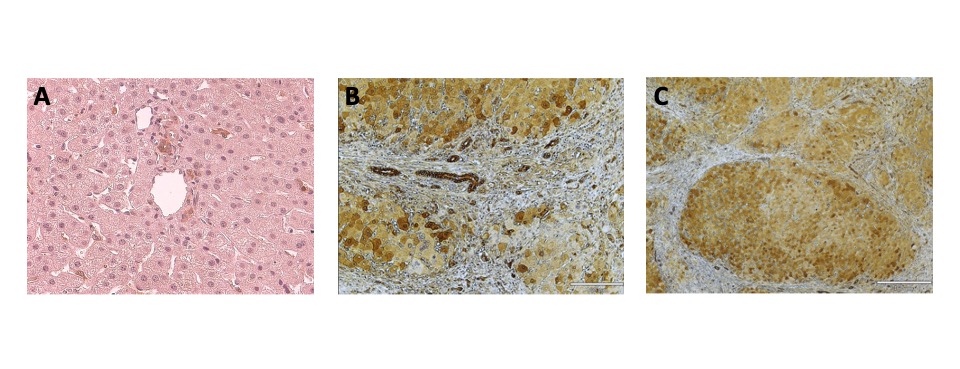Galectin-3 Expression in Autoimmune Hepatitis
1Gastroenterology, Instituto Nacional de Ciencias Medicas y Nutricion Salvador Zubiran, Mexico City, Mexico, 2Universidad de Guadalajara , Centro Universitario de la Costa., Puerto Vallarta Jalisco, Mexico, 3Instituto Nacional de Ciencias Medicas y Nutricion Salvador Zubiran, Mexico City, Mexico, 4University of Colorado Anschutz Medical Campus, Denver, CO, 5University of Colorado Anschutz Medical Campus, Aurora, CO
Meeting: 2022 American Transplant Congress
Abstract number: 1429
Keywords: Autoimmunity, Bile duct, Fibrosis, Liver cirrhosis
Topic: Clinical Science » Liver » 53 - Liver: Cirrhosis - Portal Hypertension and Other Complications
Session Information
Session Name: Liver: Cirrhosis - Portal Hypertension and Other Complications
Session Type: Poster Abstract
Date: Monday, June 6, 2022
Session Time: 7:00pm-8:00pm
 Presentation Time: 7:00pm-8:00pm
Presentation Time: 7:00pm-8:00pm
Location: Hynes Halls C & D
*Purpose: Autoimmune hepatitis (AIH) is characterized by chronic inflammation in which healthy liver cells are targeted by one’s immune system. The persistent inflammatory milieu can lead to scarring, cirrhosis, and liver failure. Apoptosis is the predominant mechanism of hepatocyte death in AIH. Galectin-3 is a beta-galactoside binding lectin involved in liver fibrosis, inflammation, and apoptosis. Based on its role, the aim of this study was to identify the cellular localization of galectin-3 in AIH.
*Methods: Immunohistochemistry was performed in liver explants (n=10) from cirrhotic patients with autoimmune hepatitis.
*Results: Galectin-3 in the liver from healthy subjects is expressed only in the sinusoidal spaces and in some cholangiocytes (Fig. 1A). In cirrhotic patients with AIH there were prominent regenerative nodules surrounded by fibrous septa with visible portal and lobular inflammatory infiltrate. Galectin-3 expression was widely distributed within the cytoplasm of these regenerative nodules and was also present in some of the inflammatory infiltrate. Moreover, these AIH patients showed prominent ductular reactions, which were also strongly expressing galectin-3. (Fig. 1B-C)
*Conclusions: Galectin-3 distinguishes hepatocyte damage, suggesting that might play an important role in the pathogenesis and progression of AIH. These findings identify galectin-3 as a component involved in the fibrotic and inflammatory process of autoimmune liver disease.
To cite this abstract in AMA style:
Rosa NLimon-dela, Moreno-Ramírez C, Cervantes-Alvarez E, Yoeli D, Vasic I, Kriss M, Huang CA, Navarro-Alvarez N. Galectin-3 Expression in Autoimmune Hepatitis [abstract]. Am J Transplant. 2022; 22 (suppl 3). https://atcmeetingabstracts.com/abstract/galectin-3-expression-in-autoimmune-hepatitis/. Accessed November 18, 2025.« Back to 2022 American Transplant Congress

